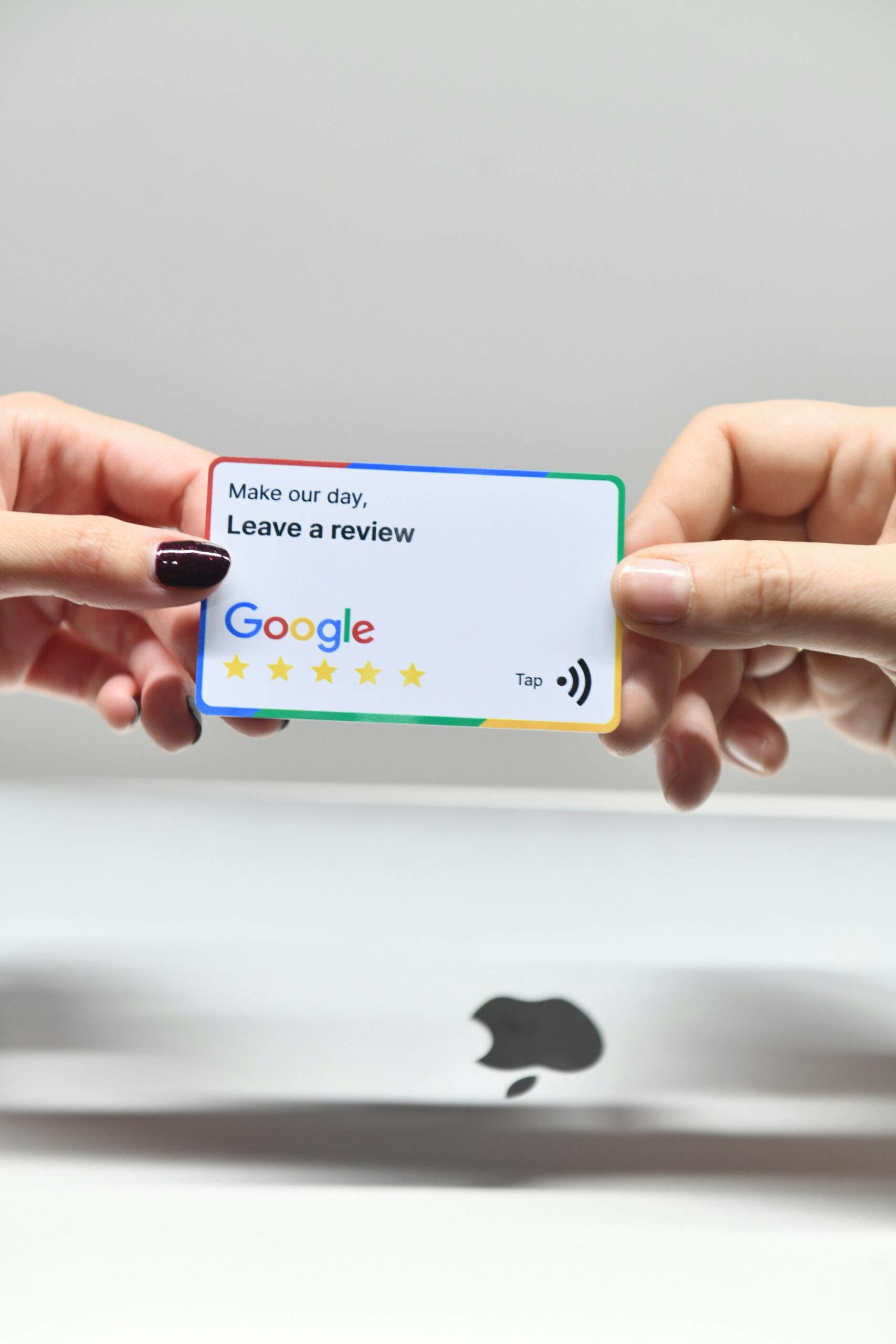Introduction
Marketing a gym today is about more than hanging a few flyers or relying on word-of-mouth. As a gym owner or manager, you need creative and effective ways to promote your gym, attract new members, and keep your current members coming back. The fitness industry is booming again (valued at over $100 billion globally in 2024 and growing fast ), which means plenty of opportunity – and plenty of competition. So, how do you stand out and make your fitness center the go-to choice?
This conversational guide will walk you through marketing ideas for gyms that really work. We’ll cover gym marketing strategies from building your online presence to running referral programs and special fitness challenges. Not only will these tips help you get new members through the door, they’ll also help you keep those members engaged for the long run (remember, boosting member retention just 5% can increase profits by 25–95% !).
Grab a protein shake and get ready – here are 15 actionable marketing ideas for a gym that will help you market your gym effectively. Whether you run a boutique fitness studio or a large health club, these ideas will help you craft a winning fitness center marketing plan to promote your gym and build a thriving fitness community. (And yes, we’ll also show how tools like PulseFit – a gym management software – can make many of these steps a whole lot easier.) 💪
Optimize Your Gym’s Website and Local SEO
In today’s digital world, your website is essentially your gym’s front door. Most potential members will check out your website (and online reviews) before ever walking into your facility. Make sure your site leaves a great first impression. A professional, easy-to-navigate website with clear information is key to marketing your gym. Include class schedules, membership options, pricing, location, and contact info. Use high-quality photos of your gym and its members to showcase the atmosphere. Consider adding a virtual tour or video walkthrough for extra engagement. And don’t neglect user experience – research shows 88% of people won’t return to a site after a bad experience, and a slow site (over 3 seconds load time) could be causing 40% of potential inquiries to drop off . In other words, a fast, mobile-friendly site with a modern design can directly impact your membership growth.
Equally important is Local SEO – making sure people can find your gym when they search online. Claim and optimize your Google My Business profile (so your gym shows up in local search and Google Maps). Encourage happy members to leave Google reviews, since fresh positive reviews boost your credibility and local search ranking. Include relevant keywords on your site (like “gym in [Your City]” or “fitness center near me”) to rank higher for local searches. If “fitness center marketing ideas” are on your mind, here’s a big one: show up where local people are already looking for fitness solutions! An optimized website and local SEO strategy will funnel a steady stream of interested folks to your gym’s front door (virtual and real).
Leverage Social Media to Connect with Your Community

If you’re not actively using social media to promote your gym, you’re missing out on a huge audience. Platforms like Instagram, Facebook, and TikTok are perfect for showcasing what makes your gym special. Today’s consumers (especially millennials and Gen Z) practically live on social media, and many follow fitness content online . By having an engaging social presence, you meet them where they already are. Share high-energy photos and videos from your gym: think snippets of group classes, trainer tip videos, member transformation stories, or behind-the-scenes clips that show your gym’s personality. Posting workout tips, nutrition advice, and success stories not only provides value, but also establishes your expertise and keeps your followers motivated . Don’t be afraid to show some personality – whether it’s a fun TikTok of your staff doing a workout challenge or an Instagram reel of a “day in the life” at your gym.
Tip: If you have room in your budget, try running targeted social media ads. Even a small spend on Facebook/Instagram ads can significantly expand your reach in the local area. You can target people by location, interests (like “fitness” or “yoga”), or demographics to ensure your gym advertising hits the right audience. A well-timed promo ad (e.g., “New Year, New You! 50% off January memberships”) can bring a surge of new faces through your doors.
Invest in Targeted Digital Ads
On the digital side, online advertising lets you laser-focus your marketing. Consider using Google Ads so your gym appears at the top of search results for phrases like “gym near me” or “fitness center in [Town]”. You only pay when someone clicks, and those clicks are coming from people actively searching for a gym – a worthwhile investment. Additionally, as mentioned above, Facebook and Instagram ads allow geo-targeting your neighborhood or city. You can run a gym marketing campaign online to promote special offers (e.g., “Join now and get your first month free!”) or new programs. Track the results of your ads (clicks, conversions to sign-ups) so you can measure the return on investment.
Marketing your gym through paid ads does cost money, but it can produce a steady stream of leads if done right. The beauty of digital advertising is you can start small, see what works, and scale up. By combining local outreach with targeted online ads, you cast a wider net and ensure your fitness center advertising ideas reach the people most likely to convert into happy members.
Implement a Member Referral Program

One of the best marketing ideas for a gym is also one of the oldest in the book: word-of-mouth referrals. People trust recommendations from their friends and family. In fact, about 65% of new business comes from referrals in many industries , and gyms are no exception. Turning your existing members into your marketing team can be incredibly cost-effective. To do this, create a referral program that rewards members for spreading the word. For example, you might offer a free month of membership, a discount on their next renewal, or some cool gym swag (t-shirt, shaker bottle, etc.) for every new member they refer. Make sure to also reward the new member – for instance, the friend who joins could get a waived initiation fee or a free personal training session. When both sides get a benefit, it creates a win-win incentive to participate .
Promote your referral program everywhere: put up posters in your gym (“Bring a Friend, Get a Reward!”), mention it in your emails and newsletters, and post about it on social media. And don’t forget to make the process easy. If redeeming the referral is a hassle, people won’t bother. Using your gym software (or a simple form) to track referrals and automatically apply rewards can streamline this. For example, PulseFit (gym management software) has features to track member referrals and apply credits, making it seamless to manage. You can periodically remind members about the program, especially if you notice attendance picking up (like back-to-school season or New Year’s). Some gyms even turn referrals into a friendly competition – e.g., “Member who refers the most friends this summer wins a $100 gift card.” However you implement it, referral marketing belongs at the heart of your gym marketing plan because it leverages the community you’ve already built. Happy members are your best brand ambassadors, so encourage them to share the fitness love!
Example: One small fitness studio started a referral contest during the fall: for every new member you referred, you and the new member both got a free personal training session. They heavily promoted this and even shared a leaderboard of top referrers (to spark a little competition). The result? Dozens of new sign-ups in a month that’s usually slow, all thanks to enthusiastic members bringing their coworkers, spouses, and neighbors to try a class.
Focus on Member Retention and Loyalty Programs
While getting new members is crucial, keeping the members you have is just as important – if not more. We’ve all heard the saying that it’s cheaper to retain a customer than acquire a new one. For gyms, improving retention yields huge benefits (boosting retention by just 5% can increase profits by 25% or more ). So, an effective marketing strategy for a gym should also include tactics to keep your current members happy, engaged, and loyal. One way is to create a loyalty program for members. This could be as simple as a points system: for example, members earn points for every class they attend, or for checking in a certain number of times per month, and those points can be redeemed for rewards (like merchandise, a free month, or guest passes). Some gyms use apps or their membership software to track this automatically – turning workouts into a fun game can motivate people to visit more often.
Beyond formal loyalty programs, think about personal touches that make members feel valued. Celebrate milestones: recognize when a member hits their 50th spin class or one-year anniversary at your gym (a shout-out on social media or a congratulatory email can make their day). You could even have a “Member of the Month” where you highlight someone’s story and achievements (which doubles as great content to inspire others). Offering personalized fitness plans or occasional free fitness assessments can show members that you care about their progress individually. Regularly ask for feedback – maybe via a quarterly survey or a suggestion box – and act on it. When members see improvements (like new equipment or a new class time) based on their feedback, they feel heard and are more likely to stick around.
Lastly, keep the community vibe strong. Host member appreciation events (a small healthy BBQ, a members-only bootcamp in the park, or a holiday party). The stronger the relationships and sense of belonging at your gym, the less likely people will drift away. Remember, marketing for gyms isn’t just about getting bodies in the door; it’s also about keeping those bodies coming back. A high retention rate means your marketing efforts compound over time, creating a large, loyal member base that will in turn give more referrals and positive reviews. Take care of your members and they will take care of your business!
Use Email Marketing and SMS to Stay in Touch
Don’t underestimate the power of a well-timed email or text message. Email marketing is one of the most cost-effective ways to nurture leads and engage current members. If someone inquires on your website or takes a trial class, make sure you capture their email (with permission) so you can follow up. Create an email newsletter (monthly or bi-weekly) that provides value – workout tips, healthy recipes, updates on new classes or trainers, success stories from members, and maybe a limited-time offer. This keeps your gym at the top of people’s minds. For instance, send out a “Tip of the Week” or a motivational Monday email to give your audience a little boost. Automated email campaigns can work wonders too: set up a welcome email series for new members (“Day 1: Welcome to the family! Here’s what to expect…”, “Day 7: How was your first week? Here’s a free class to try…”), or a re-engagement email for members who haven’t visited in a while (“We miss you! Here’s 20% off a personal training session if you come back this week”). With a tool like PulseFit or any good gym CRM, these emails can even be triggered automatically based on member activity – meaning consistent, personalized communication without you lifting a finger.
Similarly, SMS marketing (text messages) can be highly effective since texts have a very high open rate. You might use SMS for more urgent or short updates: class reminders, flash sales (“Join a friend for free this weekend – show this text at front desk”), or encouragement (“Happy Friday – don’t forget to get your workout in 💪 The gym is open until 10pm!”). Be mindful not to overdo it; no one likes spam. But occasional, well-timed texts can prompt action. For example, if someone signed up for a trial and hasn’t come in yet, a friendly text reminder (“Hi! It’s Coach Sarah from XYZ Gym – just checking in to see if you’d like to schedule your free trial workout this week. We’d love to have you!”) can make a difference in conversion.
Always segment your audience when possible. Current members and prospective members should get different messaging. Tailor content to what each group cares about. And always provide value – even if it’s just a quick fitness tip or a note saying “Great job making it to the gym this month!” to engage people. By staying in regular contact through email and SMS, you build a relationship over time. When people continuously see your gym providing useful info and friendly encouragement, who do you think they’ll consider first when they’re ready to commit (or re-commit) to a fitness routine? Exactly.
Partner with Local Businesses and Corporate Wellness Programs
Sometimes the best way to grow is to join forces. Look around your community for partnership opportunities that can be mutually beneficial. One idea is to partner with local businesses that have a similar customer base but aren’t competitors. For example, a nutrition shop or healthy cafe nearby could partner with your gym for cross-promotion – you display their flyers or offer your members a discount on their smoothies, and they do the same for your gym. Other potential partners: sports apparel stores, physical therapy or chiropractic clinics, wellness centers, or even local apartment complexes (many apartments like to offer fitness perks to residents). These partnerships can involve simple referral exchanges, or you could co-host events (e.g., a “Wellness Expo” day where various health-focused businesses set up booths at your gym). It’s all about creating a fitness ecosystem in your community.
Another fruitful avenue is corporate wellness programs. Many companies (big and small) are investing in their employees’ health, and they might be willing to subsidize gym memberships or fitness classes as part of a wellness initiative. Reach out to businesses in your area to propose a corporate rate or package. For instance, you could offer a discount if a company signs up 10+ employees, or design a special lunchtime class for a company’s staff once a week. You might be surprised – even a small office might jump at a tailored fitness deal for their team. It’s a win-win: employees get healthier and happier (which makes the company happy), and your gym gains multiple new members at once. Make it as easy as possible for the company to say yes: perhaps a simple monthly bill for all enrolled employees or even on-site sign-up days where you visit the office with info and maybe a free demo class (desk yoga, anyone?).
Don’t forget about schools and colleges too. If you have a college nearby, students could be a great target audience – maybe you run a special “Student Fitness Pass” at exam time to help them de-stress. High schools, sports teams, and community colleges might also partner for summer programs or team training sessions. The key is to get creative and look for groups of people who could benefit from what your gym offers. Partnerships and corporate deals can significantly broaden your reach in ways traditional advertising might not, and they firmly establish your gym as an integral part of the community and local fitness marketing network.
Leverage Influencers and Affiliate Marketing
In the age of social media, sometimes a single post from an influencer can bring a wave of interest to your gym. Influencer marketing means partnering with individuals who have a following (big or small) in your local area or in the fitness niche, and having them promote your gym. This doesn’t always require a huge budget; often, local micro-influencers (like a local fitness enthusiast with a few thousand Instagram followers, or a popular yoga instructor) are very approachable. You could offer them a free membership or merchandise in exchange for them posting about your gym or attending your classes and sharing their experience. The key is authenticity – you want them to genuinely enjoy and endorse your facility. Influencers might create content like a YouTube vlog of “I tried XYZ Gym for a week” or an Instagram story from your spin class. Their followers – who trust their opinions – could become your new leads. There are thousands of fitness influencers out there to choose from , so look for ones that align with your brand values and target demographic.
Closely related is affiliate marketing, which is essentially a formal referral arrangement through individuals or other businesses. In an affiliate setup, someone (an “affiliate”) earns a commission or reward for every new member they bring you through their unique link or code. For example, you could give a local fitness blogger an affiliate code – for each person who joins using that code, the blogger gets $X or a free month of membership. This incentivizes others to promote your gym for you. Affiliates could be fitness bloggers, Instagram fitness enthusiasts, or complementary businesses (like that nutrition store) who mention your gym in their newsletters or websites. If you go this route, make sure you have a way to track sign-ups (many gym management systems, like PulseFit, can help track leads and sources). You’ll also want to provide your affiliates with nice marketing materials (images, sample text, etc.) to make it easy for them to promote you.
Real-world example: A martial arts gym partnered with a local fitness YouTuber who had ~10k subscribers. The gym offered him free training for a month in exchange for an honest review video. He ended up loving the training and produced a 10-minute video showing his progress over 4 weeks. That video drew a lot of local interest, and the gym saw a spike of new trial class sign-ups coming from the video’s viewers. This kind of social proof from an influencer can lend credibility to your gym, especially among younger audiences. Just be sure any claims made are accurate and the experience delivered is top-notch – because you’ll want those folks to stick around after the initial hype!
Host Community Events and Workshops
Sometimes, the best marketing for gyms involves stepping outside the gym itself and becoming a true community hub. Hosting events is a powerful way to increase your gym’s visibility, build goodwill, and attract new faces. Think about organizing free workshops or seminars on fitness and wellness topics. For instance, you could host a “Nutrition 101” talk, a yoga in the park session, a weekend bootcamp at the local beach, or a workshop on running techniques for beginners. These events can be open to the public (not just members), so they act as a friendly invitation for people to check out your expertise with no pressure. Partner with other experts if needed – maybe a local dietitian for the nutrition talk, or a physiotherapist for an injury-prevention workshop. By providing value upfront, you create a positive association with your gym name.
Community events don’t have to be strictly educational. You could also organize fun events like a charity fitness challenge (e.g., a fundraiser where people donate to participate in a special class and proceeds go to a local charity). Or perhaps a “Gym Open House” day where anyone can drop in, try out equipment or classes, meet the trainers, and enjoy some healthy snacks. Invite local vendors to set up booths (smoothie samples, sportswear pop-up, etc.) to make it feel like a mini fitness expo. When people attend these events, they’ll get a sense of your gym’s atmosphere and community. Make sure you have a way to capture their info if they’re interested (a sign-up sheet for a free trial or a raffle they can enter by leaving their email). Even something like a community fitness challenge (like a city-wide step count contest or virtual 5K) sponsored by your gym can draw attention.
These efforts position your fitness center as more than just a place to work out – it becomes a supporter of healthy living in the community. The local press or community Facebook groups might even mention your events, further spreading the word. And of course, promote these events on your own channels. The idea is to get people involved with your gym’s brand in a positive, low-commitment way. Once they’ve spent an afternoon at your awesome workshop or had a blast at your charity bootcamp, they’ll be much more inclined to consider an actual membership or class package. Community engagement is a longer-term marketing play, but it builds trust and brand awareness that can pay off big time in loyalty and referrals. Plus, it feels good to give back and connect with people – which is what fitness is all about!
Offer Free Trials and Guest Passes
There’s a reason so many successful gyms offer some form of free trial or guest pass – it lowers the barrier for new people to check out your facility. Let’s face it, joining a new gym can be intimidating. Offering a no-strings-attached trial helps potential members overcome that hurdle by experiencing your gym firsthand. This could be a 1-day pass, a week trial, or a certain number of free classes. Yes, a few people might just use the freebie and not come back, but many will convert to paying members once they see the value you provide. The key is to make sure their trial experience is fantastic. Treat first-timers like VIPs: give them a tour, introduce them to instructors, maybe pair them with a “gym buddy” or trainer for their first workout to make them feel comfortable. Follow up with them after their visit – a friendly call or email asking how it went and inviting them to join with a special newcomers’ discount can nudge them to commit.
You can also incorporate guest passes into your membership perks. For example, give each member a couple of guest passes each month or quarter, encouraging them to bring a friend along. This ties into referrals, but even if the guest just comes for a fun one-off workout, it increases your gym’s exposure. Consider special “Bring a Friend” days where members can bring a guest for free to any class. Many people are more likely to try a gym if they can go with a friend who already goes there – it’s less daunting and more fun. Capitalize on that social aspect.
From a marketing perspective, make sure your free trial or guest offer is highly visible. Mention it in all ads, put it front-and-center on your website (“Get Your Free 3-Day Pass!”), and ensure your front desk staff always offers it to walk-ins. You might even distribute physical free pass cards around town (coffee shop counters, apartment welcome packets, etc.). The goal is to make it as easy as possible for someone to say “Why not, I’ll give it a try.” Once they’re in the door, your gym’s atmosphere, staff, and community should do the real selling. It’s much easier to convince someone to join after they’ve already had a great workout in your facility. So essentially, giving away a bit of free access can be one of the smartest gym marketing strategies – it’s an investment in earning a loyal paying member down the line.
Run Fitness Challenges and Special Promotions

Everyone loves a good challenge or a timely promotion – it adds excitement and urgency. Hosting periodic fitness challenges is a superb way to energize current members and attract new ones. These can be themed in many ways: a 30-day weight loss challenge, a “summer shred” challenge, a steps or mileage challenge, or even fun team-based challenges. For example, you could challenge members to attend a certain number of classes in a month, and those who hit the goal get a prize or recognition. Promote the challenge externally too – non-members might be able to join by paying a small fee (which could include temporary access to your gym for the duration of the challenge). This way, they participate alongside members and get a feel for the community. Challenges tap into people’s competitive spirit and desire for structure. By the end of it, participants have built a habit (and hopefully seen results), making them more likely to stick with your gym afterward. Plus, you’ll have tons of great content to share – weekly leaderboards, transformation photos (with permission), and shout-outs to participants, which all serve as social proof of your gym’s effectiveness.
In addition to challenges, consider running seasonal promotions or flash sales to create buzz. For instance, a New Year’s special (“Sign up in January and get 50% off first month”), a “summer shape-up” package for the summer months, or deals around anniversaries (your gym’s birthday) or holidays. Limited-time offers with a clear deadline can spur fence-sitters to act. You can also tie promotions to community events (e.g., “Marathon runners special: 1 month of cross-training classes for X price”). Get creative with themes. The idea is to give people a reason to join now rather than later. Just be careful not to undercut your value – promotions should add incentive, but not devalue your core membership. Often, adding extra value is better than slashing price (like “join this month and get 3 free personal training sessions” rather than “50% off membership”, unless you’re comfortable with the discount).
Example: A noteworthy campaign was Planet Fitness’s High School Summer Pass. They let teens work out for free during the summer, which brought over 3 million teenagers into their gyms in a single summer ! That’s an extreme example of a free promotion, but it shows how a bold campaign targeting a specific group can massively boost awareness. While you may not open the doors free to every teen in town, you could do a scaled version – like a “Teacher Appreciation Month” where teachers get a free week in summer, or “First Responders February” with special deals. These promotions not only attract new people, they also generate positive PR. When done well, gym marketing campaigns like challenges and special promos can pump up your client base (and your revenue) quickly, while keeping things fresh and fun for your existing members.
Sell Branded Merchandise for Marketing and Revenue
Ever notice how big fitness brands turn their logos into fashion statements? Your gym might not be the next Nike (not yet, anyway!), but selling branded merchandise can be a savvy marketing move. Think t-shirts, tank tops, water bottles, gym bags, hats, etc., emblazoned with your gym’s name and logo. When your members proudly wear your gear around town, it’s free advertising – essentially turning them into walking billboards for your fitness center. It also builds a sense of pride and community; people love to rep the places that are important to them. You can even make it exclusive or “earned” – for example, a special colored shirt once they complete 100 workouts, which can really motivate members (they’ll wear that accomplishment with pride).
From a revenue standpoint, merchandise sales can add a nice little boost. You likely won’t retire on t-shirt profits, but every bit helps and it often requires minimal effort. Stock a small retail area in your gym with popular items like shirts and shaker bottles. If you’re unsure what will sell, start with a small order or even an on-demand printing service. Design matters – a cool slogan or stylish design can make your gear more desirable. You might run a contest for members to design the next gym shirt, making it a fun community project.
Additionally, use merchandise as incentives in your marketing campaigns. As mentioned, give away shirts for referral rewards or challenge prizes. New members could get a free gym t-shirt as a welcome gift (now they have something to wear next time they come!). Not only does merch extend your brand’s reach, but it also deepens the connection members feel. It’s one thing to go to “the gym”, and another to feel like you’re part of a brand or team. When people start calling themselves “I’m an [Your Gym Name] person” and wearing your logo, you’ve created something bigger than just a place to work out. That kind of brand loyalty is marketing gold – and a T-shirt or two can help get you there.
Diversify Your Offerings with Specialized Classes and Programs
Sometimes, a key answer to how to market your gym is to offer something new and exciting that people can’t get elsewhere (or at least, not from every gym on the block). By diversifying your fitness offerings, you can attract niche groups of people and keep existing members from getting bored. Look at current fitness trends and consider adding specialized classes or programs. For instance, could you introduce a yoga class, a high-intensity interval training (HIIT) bootcamp, a dance fitness class (Zumba or hip-hop), or even something unique like a martial arts-based workout? If you primarily run a gym with machines and free weights, adding group classes can open your doors to a whole new segment of clientele. Conversely, if you’re a boutique studio, maybe offering occasional open gym hours or workshops can diversify your appeal.
Another angle is to offer programs for specific populations: senior fitness classes, prenatal/postnatal fitness, teen training programs, etc. Catering to these groups can set you apart. For example, a gym that runs a “Silver Sneakers” senior program at off-peak hours might draw in retirees who otherwise feel out of place in typical gyms. Or a gym that offers a “Teen Sports Conditioning” summer camp could attract high school athletes (and as a bonus, their parents might join too!). Bringing in guest instructors or experts for limited-time programs is also effective. Zenoti (a spa/fitness software) noted how inviting fitness industry experts for guest classes can create buzz and draw in enthusiasts . You might advertise a 6-week boxing workshop taught by a local boxing champ, for instance – members pay a bit extra for a special experience, and non-members might sign up just for that, giving you a lead to convert into full membership.
From a marketing perspective, every new class or program is a fresh thing to promote. It’s newsworthy on your social media and email newsletter (“Now offering Spin & Yoga Fusion class – try it free this Friday!”). It can also re-engage past members (“We’ve added CrossFit-style classes since you last visited us”). Just ensure you promote new offerings well in advance to build interest, and consider running them as trials to gauge interest. Not every new idea will be a hit, but those that resonate can significantly boost your reputation and word-of-mouth. People will say, “Oh, that’s the gym that has that awesome kickboxing class” – and that’s a great niche to own. Keeping your finger on the pulse of fitness trends and being willing to experiment with new offerings is a sign that your gym is dynamic and passionate about providing the best fitness experiences.
Encourage Testimonials and Online Reviews

In the digital age, social proof can make or break a consumer decision. Before someone tries a new restaurant, they check Yelp. Before they join a gym, you can bet they’re checking Google reviews, Facebook recommendations, or testimonials on your website. That’s why actively encouraging reviews and testimonials is a smart marketing move for gyms. Don’t leave it to chance – when you have satisfied members (especially those who’ve achieved great results), politely ask them to share their experiences. This could be a quick star-rating and comment on Google or a more detailed testimonial for your website. Some gyms even set up a dedicated testimonial wall or binder at the front desk where people can write down their success stories or positive feedback, which can later be shared (with permission) on social media or marketing materials.
Apart from formal reviews, testimonials and success stories are fantastic content. You could do quick member spotlight interviews: “Meet Jane – since joining our gym she’s lost 20 lbs and ran her first 5K!” with a nice photo of Jane (if she’s comfortable) and her story. Share these in emails, on your site, even on a bulletin board in-gym. It not only celebrates your member (boosting their loyalty), but also inspires others. Seeing someone “like them” succeed makes prospects think “Hey, maybe I can do it too at this gym.” It’s one of the most compelling ways to market fitness – by showcasing real results and real happy members. In summary, actively cultivating a positive online reputation and highlighting customer success stories should be a core part of your fitness marketing plan. It builds trust faster than any ad copy can. People are more likely to believe Jane or John talking about how great your gym is than you just telling them. So let your members do the talking – and watch the new folks roll in.
Embrace Gym Management Software to Streamline Marketing
Last but certainly not least, let’s talk tech. We live in an age where data and automation can give your gym a major marketing edge. Utilizing an all-in-one gym management software like PulseFit can simplify many of the strategies we’ve discussed and ensure nothing falls through the cracks. How so? For starters, a good gym software acts as a CRM (Customer Relationship Management) tool – it keeps track of your leads and members, their contact info, membership status, class attendance, etc., all in one place. This means you can segment and target your communications better (remember those segmented email campaigns we mentioned?). It can trigger automated emails or texts based on member behavior: welcome messages, birthday greetings, reminders if someone hasn’t checked in for 2 weeks, or a prompt to renew when their membership is due to expire. Automation keeps your engagement consistent and timely without you having to manually remember a hundred things.
Such software often includes features for booking and scheduling, which improves the member experience (and a happy member is more likely to refer friends). In fact, more than 70% of fitness class bookings now happen via mobile devices – having an online booking system or mobile app linked to your software is practically expected. It’s convenient for members to reserve spots in classes or training sessions, and you can send automatic class reminders (reducing no-shows). On the marketing front, many gym management platforms also offer integrated marketing tools – think email templates, text blasts, even the ability to push notifications through a custom gym app. They provide analytics too: you can analyze membership data to see trends (like which months are slow, which classes are most popular) and measure the success of promotions . This data-driven approach lets you refine your marketing strategy for your gym over time, focusing on what works best.
Conclusion
Remember, the goal is not just to get more gym members, but to build a strong, loyal community that sticks with you for the long haul. That means balancing acquisition efforts with retention efforts. It’s exciting to see new faces join, but it’s just as rewarding to see familiar faces hitting new personal bests one year in. As you apply these marketing tips for gyms, keep tracking what works (and what doesn’t) and be ready to adapt. The fitness industry trends may evolve – what’s hot today (say, a particular fitness challenge or social media platform) might change tomorrow – but a customer-centric approach will always win.
Finally, don’t hesitate to leverage tools like PulseFit to lighten the load. As a gym owner/manager, your time is precious. Automating follow-ups, class bookings, and data analysis gives you more freedom to engage with your members in person and devise even more brilliant marketing ideas for fitness growth.








